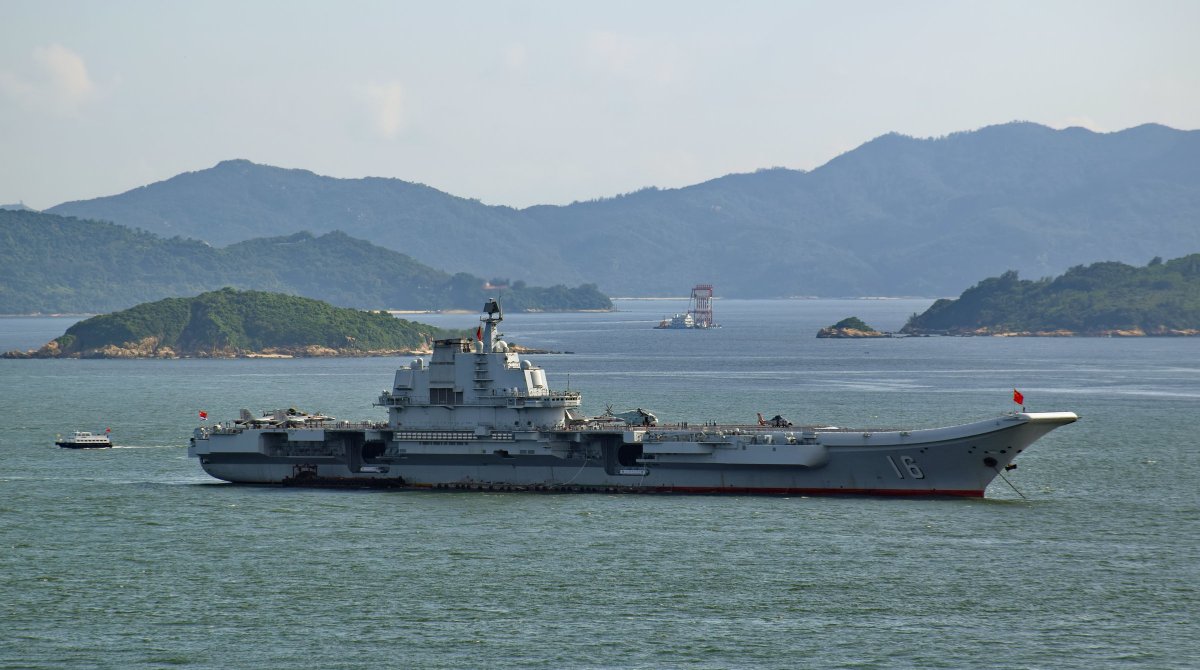PM spells out India’s position on China
I n a recent interview to Newsweek, the Prime Minister, discussing Indo-China relations, commented, “For India, the relationship with China is important and significant.
China plans to build four nuclear-powered aircraft carriers by 2035 and develop new carrier-based fighter jets as Beijing tries to boost its naval prowess and catch up with the powerful US Navy, a media report Wednesday quoted Chinese military experts as saying.

China currently has one aircraft carrier in service the Liaoning, commissioned in 2012. (Photo: Wikimedia Commons)
China plans to build four nuclear-powered aircraft carriers by 2035 and develop new carrier-based fighter jets as Beijing tries to boost its naval prowess and catch up with the powerful US Navy, a media report Wednesday quoted Chinese military experts as saying.
China currently has one aircraft carrier in service the Liaoning, commissioned in 2012 and the Type 001A, the first carrier built in the country, which is still being tested.
Chinese President Xi Jinping, also the head of the People’s Liberation Army (PLA) has ordered the military to modernise by 2035 and become a top-ranked fighting force by 2050.
Advertisement
Four of at least six aircraft battle groups China plans to have in the water by 2035 will be nuclear-powered, as the Asian giant tries to equal the US in naval strength, the South China Morning Post reported.
The experts said that after decades of trying to close the gap, the PLA Navy’s hardware might by then be closer to matching the world’s leading superpower in aircraft carrier technology but it would still lag in real combat experience.
All of China’s new carriers were expected to be equipped with electromagnetic catapults similar to those used by the United States, the experts said.
The US’ electromagnetic aircraft launch system, known as EMALS, can launch more aircraft more rapidly than the older diesel systems.
“China’s nuclear-powered aircraft carriers with [EMALS-like systems] are expected to join the navy by 2035, bringing the total number of carriers to at least six although only four will work at the front line,” Wang Yunfei, a naval expert and retired PLA destroyer naval officer, said.
“The country needs to keep developing until it is at the same level as the United States,” Wang was quoted as saying by the Hong Kong-based newspaper.
The US seeks to keep its place as the dominant naval power across the Indo-Pacific, where Washington and its allies believe Beijing is trying to rewrite international rules and military alliances in place since World War II.
But Beijing is keen to expand its aircraft carrier battle groups to fulfil its global naval ambitions and defend its growing overseas interests.
Construction of its next conventional diesel-powered aircraft carrier, the Type 002 the first equipped with the electromagnetic launchers began last year.
Wang said the budget for the carrier projects would not be cut despite an economic slowdown and a trade war with the US.
“Even if the economic downturn has an effect, we can adjust proportions in total military expenditure to make sure naval modernisation keeps going,” he said.
Song Zhongping, a television military commentator in Hong Kong, said China’s fleet of aircraft carriers would expand to reflect its global standing.
With the PLA planning to have four nuclear-powered carrier battle groups on the front line by 2035, the Type 001A and its next-generation carrier Type 002 would become temporary battle ships, Song said.
Both Wang and Song said the Liaoning would be replaced by the Type 001A by 2035, by which time the Liaoning would be obsolete. The Liaoning was refitted from a half-built Soviet hull bought from Ukraine in 1998 and is used to train carrier crews.
The PLA Navy will develop one of its fighter jets for use on its aircraft carriers, with debate ongoing over whether that will be the FC-31 or J-20. China has just one type of carrier-based fighter jet, the J-15, whereas the US has two.
Wang said Chinese engineers were developing a next-generation carrier-based fighter, describing it as a variant of the FC-31 stealth fighter, whose fighting capability may be “a little bit behind the US’ F-35C”.
Song said China’s overall strength would remain limited by a lack of combat experience.
“China’s aircraft carrier technology and its carrier-based fighter jets will be developed to match the same generation of their American counterparts, but hardware build-up is only part of the picture,” he said.
Advertisement